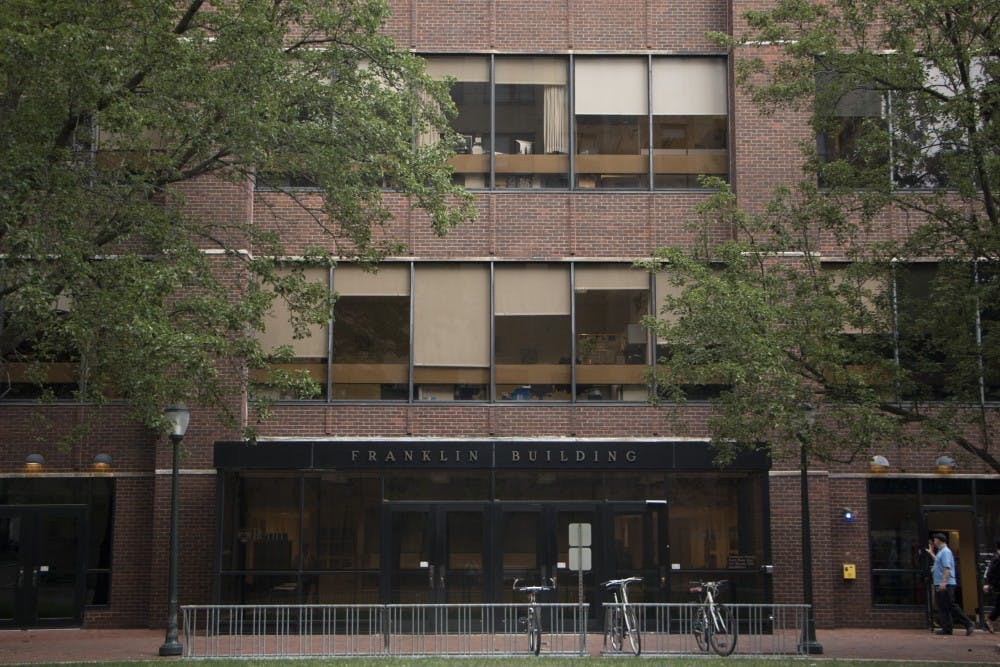
College freshman Cassandra Jobman received $25,000 for her tuition after winning the Chick-Fil-A’s True Inspiration Award. She applied for the scholarship after receiving financial aid through Student Registration and Financial Services, which would require her family to pay $4,000 per year, or $16,000 total over four years.
This would leave Jobman with an extra $9,000 to spend outside of her tuition. Jobman said she planned to put the leftover Chick-Fil-A scholarship money toward a laptop for herself and new winter clothes.
But over the next few months, Jobman received responses from multiple financial aid administrators at Penn who provided her with conflicting information. She was told that the University would lower the amount of financial aid initially provided to her to account for the outside scholarship.
In trying to make sense of the different information from multiple SRFS officials, Jobman joined the many students at Penn also frustrated with the "confusing" and "inconsistent" policies at Penn.
“Chick-Fil-A could’ve given my unused scholarship to another student who really needed it,” said Jobman, an opinion artist for The Daily Pennsylvanian. “Penn has billions of dollars in endowment. Why do they need to take my scholarship money?”
Ultimately, SRFS adjusted Jobman's aid package so that she would receive $300 each semester. The office also provided her with a laptop three months after courses began in the fall.
In addition to having her financial aid package readjusted, Jobman said she dealt with false guarantees made by SRFS officials, repeated meetings canceled by her financial aid advisor, and varying answers from different SRFS officials.
Senior University Director of Financial Aid Elaine Papas-Varas said SRFS is aware of the inconsistencies among responses from its staff members and is currently working to address them.
Two months ago, an outside consultant hired by SRFS completed an “extensive documentation” of its financial aid policies and practices to examine their consistency. Since then, SFRS has started training their staff members again to ensure they all give consistent answers to student inquiries.
“We still have work to do but we have now embarked on a process of how we ensure every student gets the same answer,” Papas-Varas said.
According to the website, SFRS has a “dollar-for-dollar reduction” policy which says that for every dollar a student earns in the form of outside scholarships, Penn deducts a dollar from the “self-help component of [their] financial aid package," which includes expected savings from summer earnings and work-study earnings.
This means that students can lose part of their financial package when they receive outside scholarships, raising the overall cost of their family’s contribution.
Engineering freshman Claire Pince was awarded $25,000 worth of tuition money upon receiving the Horatio Alger National Scholarship.
With an updated financial aid package that accounted for her awards, Pince and her family still struggled to understand how much they were expected to pay to the University.
In fact, after her family paid her tuition bill for the fall semester, they received some money back because they had misunderstood their expected contribution value.
“Financial aid is really confusing, especially when scholarships come in,” Pince said. “I don’t actually know what I owe."
"Knowing exactly what I owe and how to access this money to use it for textbooks and stuff like that, that would just be really great,” she added.
Despite the frustration experienced by some students as they try to utilize outside scholarships, others say they did not encounter any issues with application of such scholarships.
Wharton and Engineering freshman Shannon Lin won an outside scholarship worth $5,000 which replaced the loan she was expected to receive from Penn.
Lin said she was pleased with how Penn dealt with her award but did note that her case was rare among those who did receive outside scholarships.
“There’s money that Penn would’ve offered [financial aid recipients] in the first place, and I feel like they are already entitled to that money if Penn already agreed to give it,” Lin said.
Ultimately, outside scholarship recipients want clearer information on how their awards will be handled by Penn.
“If SFS could be more transparent and more communicative with students, that would just be really helpful,” Pince said.
The Daily Pennsylvanian is an independent, student-run newspaper. Please consider making a donation to support the coverage that shapes the University. Your generosity ensures a future of strong journalism at Penn.
Donate




